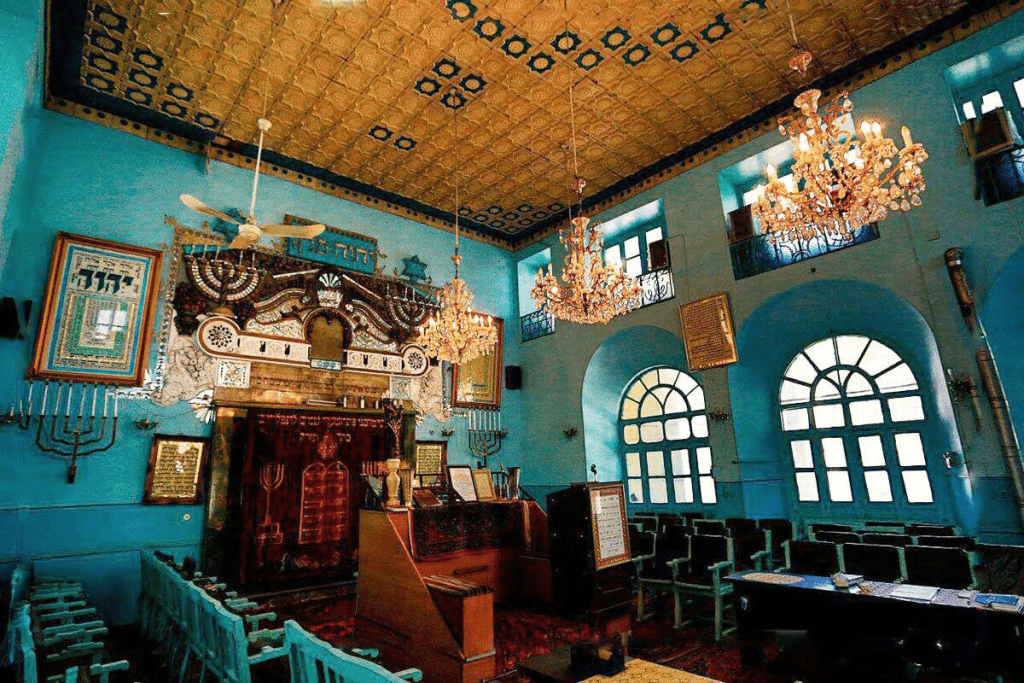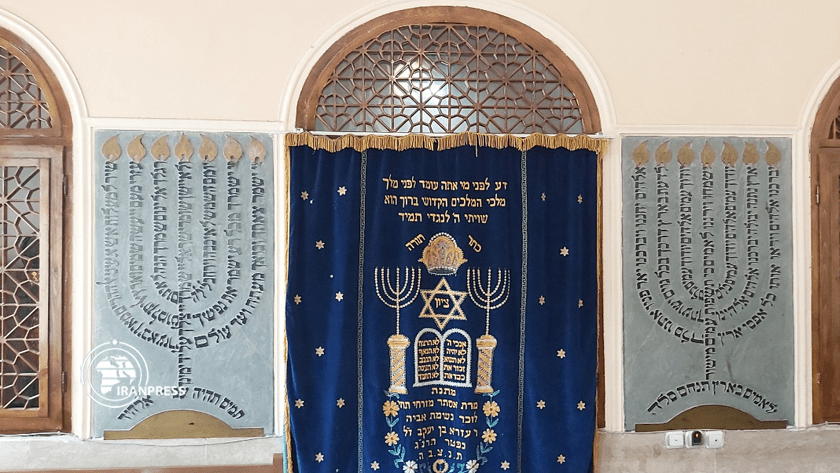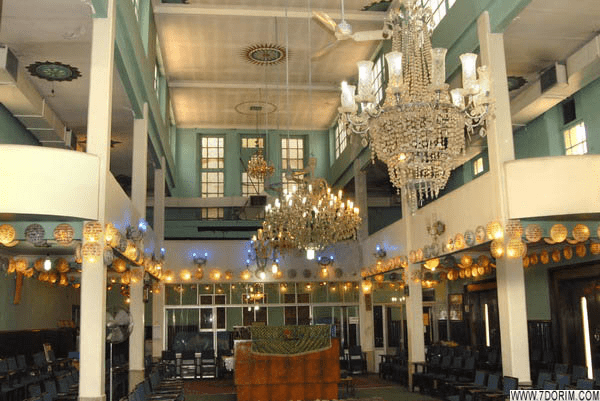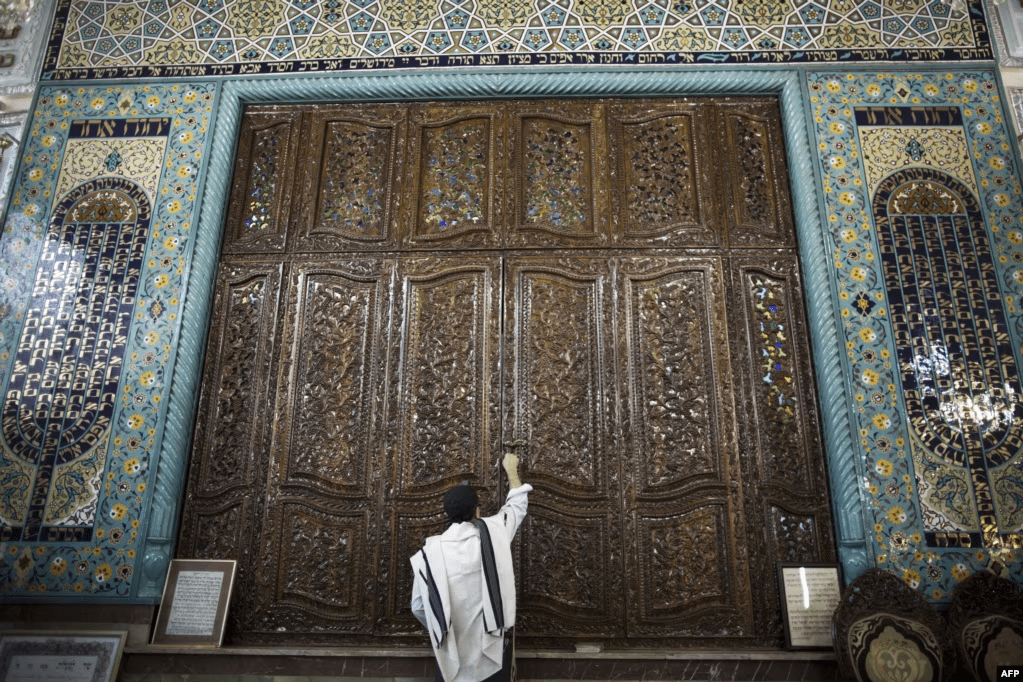Iran isn’t exactly the first place that comes to mind when you think of thriving Jewish communities, but it actually has one of the oldest and largest Jewish populations in the Middle East outside of Israel.
Though the numbers have dropped dramatically since the 1979 Islamic Revolution, Jewish life in Iran still exists, and more than that, it holds deep cultural, religious, and historical significance.
Today, we’re diving into the roots of Jewish life in Iran, and spotlighting some of the country’s most fascinating synagogues — from sacred spaces lined with velvet curtains and ancient Torahs to community centers that became safe havens during global conflict.
Ancient Roots in Persia
Jewish life in Iran goes way back — like 6th century BCE back. After being exiled by the Assyrians, some Jews ended up in Mesopotamia (present-day Iraq and Iran).
They built strong ties with King Cyrus the Great, founder of the Persian Empire, and even served as his advisors. When Persia moved to take Babylon, Jewish communities reportedly helped out with intel on the city’s defenses.
As a thank you, Cyrus let them return to Palestine — but many chose to stay behind. For those who remained, this era was considered a golden age: they held major roles in society, practiced freely, and even contributed to writing the Babylonian Talmud.
The Jewish Community Today
In 1979, Iran had about 80,000 Jews. Today, that number has dropped and is estimated to be around 10,000, yet it is still reportedly considered the second biggest Jewish community in the Middle East.
Most now live in cities like Tehran, Isfahan, and Shiraz. Still, they are officially recognized by the state, have a representative in parliament, and run their own institutions.
Despite international assumptions, many community leaders say relations with the government are generally respectful.
Iranian Jews consider themselves Iranians first and Jews second. In an interview with USA Today in 2018, an Iranian Jew expressed this sentiment: “We’re not an entity outside of the Iranian nation… I may pray in Hebrew, but I can only think in Persian (Farsi, Iran’s language).”


Haim Synagogue – The “Alive” Synagogue
Tucked into Tehran’s Si-e Tir Street, once nicknamed Adyan Street because of its mosques, churches, and this synagogue, Haim Synagogue is more than a place of worship.
Built in 1913, it started out as a tiny prayer room. As the community grew, so did the space. It was rebuilt with a seven-branched menorah in the main hall, crystal chandeliers, velvet curtains, and Hebrew calligraphy.
The name “Haim” actually means “alive,” a nod to how often the community visits. Around the synagogue, Jewish homes eventually formed a neighborhood. It’s a living symbol of how Jews in Iran made space for themselves — literally and culturally.


Ezra Yaghoub Synagogue – A WWII Refuge
Dating back to 1894, the Ezra Yaghoub Synagogue is considered one of the oldest synagogue in Tehran. It’s actually two synagogues built opposite each other on raised platforms surrounding a courtyard.
But what makes it especially powerful is its history during World War II — when Polish Jewish refugees fleeing Nazi Europe found shelter here. It’s a reminder that Iran, at one point in time, became an unexpected safe zone for Jews in crisis.


Ettefagh Synagogue – The Iraqi Connection
The name Ettefagh or “Ettefaq” means “unity” — and that’s exactly what this synagogue became for Iraqi Jews who fled rising hostility in Iraq during the 1940s.
Many of them settled in Tehran, and Ettefaq became their synagogue — also known as the Iraqi Synagogue. More than just a prayer space, it turned into a tight-knit community hub for people trying to rebuild their lives across the border.

Keter David Synagogue – Home of a 500-Year-Old Torah
One of the most treasured features of the Keter David Synagogue is its ancient Torah scrolls — some written 500 years ago on kosher animal leather.
These scrolls are still in use today, with portions read every week so the Torah is completed once each year. It’s a beautiful blend of tradition and endurance — a sign of how committed the community is to preserving its religious rituals through the centuries.


Yousef Abad Synagogue – The Tent of Peace
Known officially as Sukkat Shalom (which means “Tent of Peace” in Hebrew), the Yousef Abad Synagogue is the largest and most active synagogue in Iran today.
It was built in the 1950s and is still going strong. What sets it apart is its openness — the synagogue welcomes not just Jews but also non-Jewish Iranians and even tourists who want to learn, pray, or simply visit.
Located in the Yousef Abad neighborhood in Tehran, it’s become the go-to synagogue for many and symbolizes the future of Jewish life in Iran — one that’s proud, open, and still deeply tied to its Persian identity.
Final Thoughts
Despite everything — revolution, exile, and population decline — Iran’s Jewish community remains deeply rooted in the country’s history. These synagogues aren’t just religious spaces.
They’re symbols of resilience, cultural memory, and co-existence. Whether it’s a 500-year-old Torah or a wartime shelter, each synagogue tells a piece of the story. And as the community continues to live, pray, and evolve in Iran, that story is far from over.
WE ALSO SAID: Don’t Miss…What’s Happening Between Iran and Israel? Here’s a Breakdown of the Escalation




